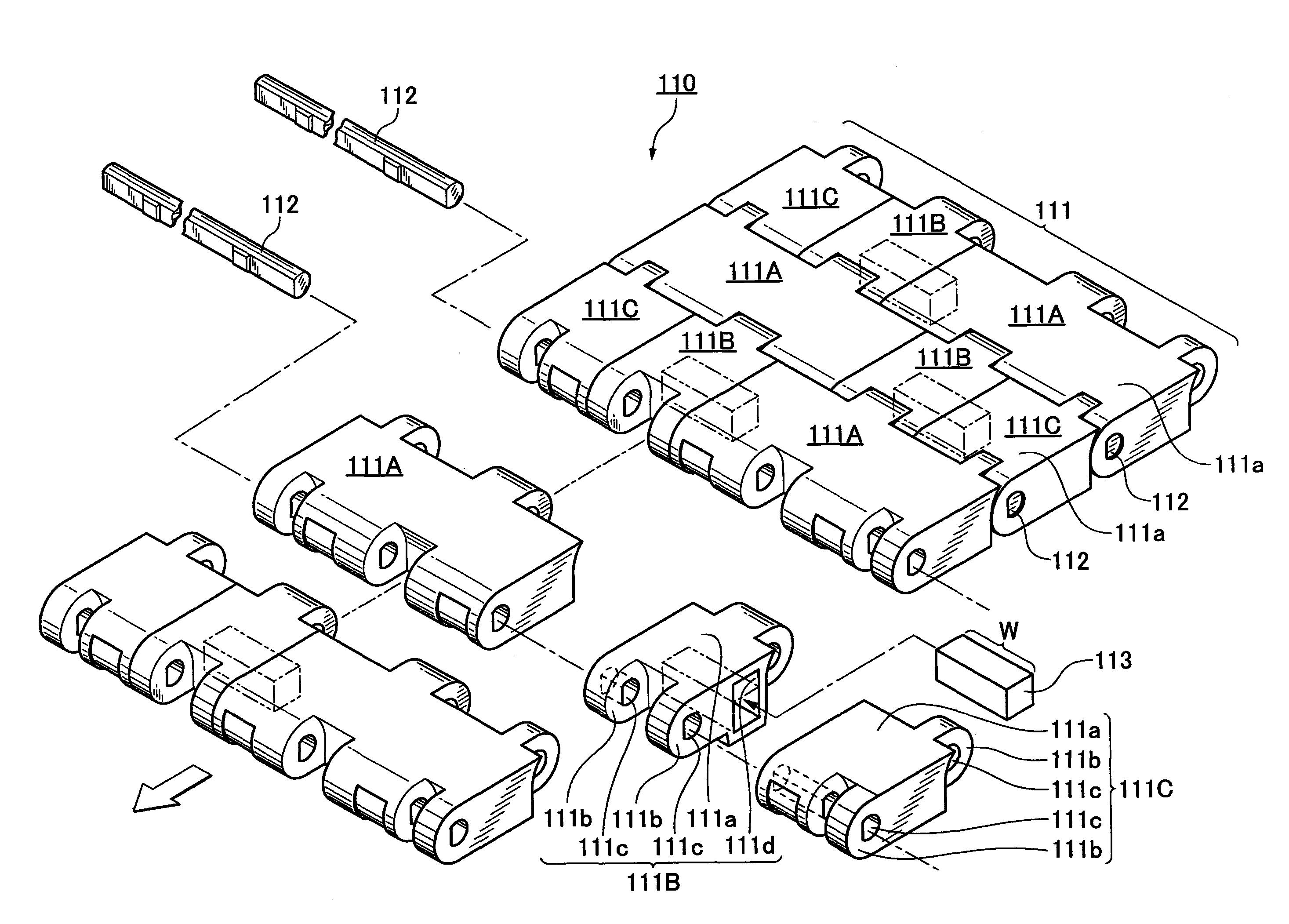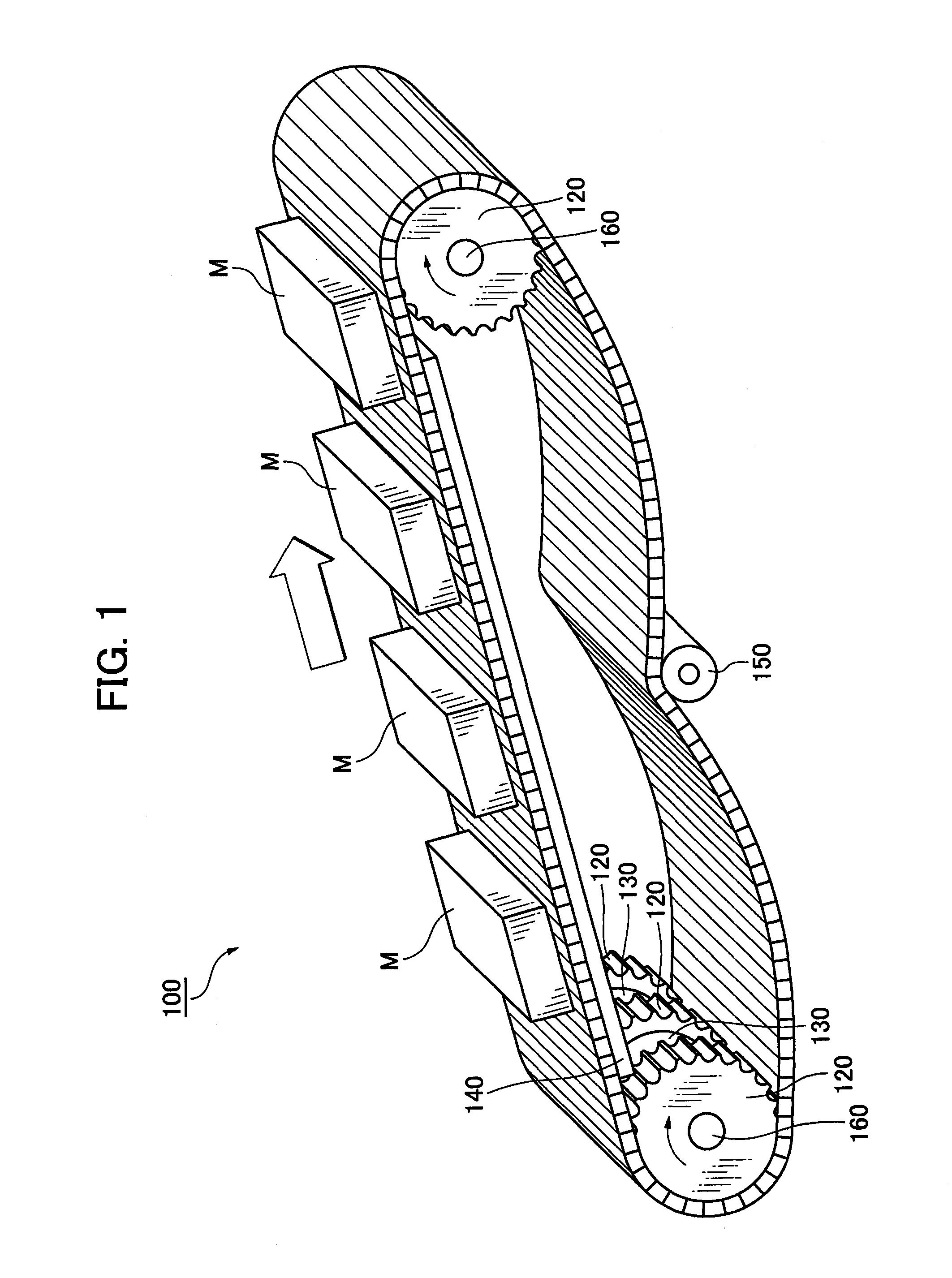Chain conveyor system
a conveyor system and chain technology, applied in the direction of conveyor parts, rollers, transportation and packaging, etc., can solve the problems of destroying permanent magnets, generating noise in the chain conveyor system, and difficult to separate articles, so as to avoid damage and vibration noise, smooth transfer of metallic magnetic articles, and smooth transfer
- Summary
- Abstract
- Description
- Claims
- Application Information
AI Technical Summary
Benefits of technology
Problems solved by technology
Method used
Image
Examples
embodiment
[0032]An embodiment of a chain conveyor system 100 of the invention will be explained with reference to FIGS. 1 through 6.
[0033]As shown in FIG. 1, the chain conveyor system 100 of the illustrated embodiment of the invention comprises a conveyor chain 110 and sprockets 120 that are wrapped by and engage with the conveyor chain 110 to form a closed loop having a conveying run along the top and a return run on the bottom. The conveyor chain 110 comprises a large number of synthetic resin links 111 and link pins 112 for linking the links with each other in a chain longitudinal direction. Each link comprises three modules 111A, 111B and 111C (see FIGS. 2 and 3). The chain 110 conveys metallic magnetic articles M by attracting and retaining the articles on loading surfaces 111a thereof by magnetism in a conveyor line inclined upward.
[0034]Thus, the chain conveyor system 100 conveys the metallic magnetic articles M by securely attracting and retaining the articles while avoiding damage an...
PUM
 Login to View More
Login to View More Abstract
Description
Claims
Application Information
 Login to View More
Login to View More - R&D
- Intellectual Property
- Life Sciences
- Materials
- Tech Scout
- Unparalleled Data Quality
- Higher Quality Content
- 60% Fewer Hallucinations
Browse by: Latest US Patents, China's latest patents, Technical Efficacy Thesaurus, Application Domain, Technology Topic, Popular Technical Reports.
© 2025 PatSnap. All rights reserved.Legal|Privacy policy|Modern Slavery Act Transparency Statement|Sitemap|About US| Contact US: help@patsnap.com



